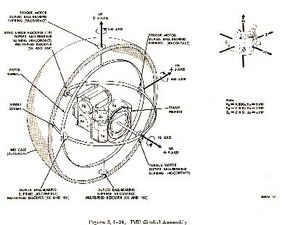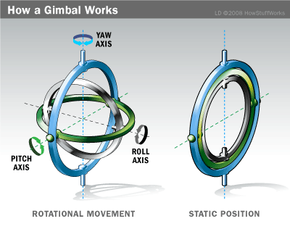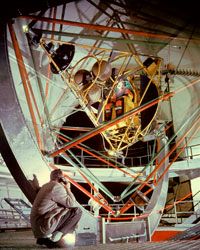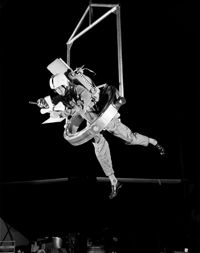One of NASA's most important spacecraft instruments is the inertial measurement unit (IMU). An IMU measures changes in pitch, roll and yaw as well as acceleration. The IMU contains accelerometers and gyroscopes to monitor changes in spacecraft velocity and attitude.
For the Gemini missions, NASA used a four-gimbal system. But for the Apollo missions, NASA decided to go with a three-gimbal system. That's because engineers worried that they would miss their goal of landing a man on the moon before 1970 if they waited to perfect a four-gimbal system. Because the Apollo spacecraft IMU only used three gimbals, astronauts had to stay alert and realign the spacecraft to avoid gimbal lock.
NASA also used gimbals when building the propulsion systems for spacecraft. A fixed rocket engine or thruster would only be able to provide thrust in a single direction. Mounted on gimbals, the same propulsion unit could tilt to provide thrust in different directions. This is critical whenever a spacecraft must align itself with another body, whether it's another spacecraft, a planet or the moon.
It's pretty amazing to think that a simple series of interconnected rings made it possible for NASA to send a manned spacecraft to the moon. Without gimbals, we couldn't navigate or travel in space with any precision.



